Beth Alexander stops in at Bacon today with a radiant essay on a favorite children’s book.
She makes me want to stay in bed and read – to ignore the glorious summer morning and the flowers that need watering and the laundry that needs doing and the bills that need paying.
(Perhaps I shall read in bed, for just a little while, perhaps a book about a little girl…)
From Beth:
In 1963, my parents’ dreams were coming true. They moved with their three children, aged 8, 6 and 4, into a new house they had built together, and they opened The Book Inn, both structures with Tudor influences. During the construction of the house, my mother drove to Nashville or Birmingham to ferret out architectural treasures they could use. Reclaimed light fixtures from a building being demolished in Nashville were installed in the upstairs bedrooms. Made of alabaster and wrought iron, they were luminous and seemed to contain magic.
During the construction, Mom walked me up the raw wood stairs and showed me what would be my new room. “It’s the best room in the house,” she said. “You’re surrounded by trees and can see who’s coming up the driveway.” I saw Peter Pan flying through the casement windows.
Only decades later did it occur to me that she might have said something similar to my sister, perhaps something like, “Yours is the best room in the house. You’ll see all the trees and wildflowers in the back yard, and you’ll be able to hear the birds every morning.” She was telling the truth both times.
The Book Inn was a source of wonder, filled with books and gifts. After school, we finished homework or found something new to read. I was soon taught to check inventory and fill the racks of greeting cards.
That was also the year that a new edition of A Little Princess, by Frances Hodgson Burnett, originally published in 1905, was released with enchanting illustrations by Tasha Tudor. It was the most beautiful book I had ever seen, and evidently has staying power. In 2007, the National Education Association included it in “Teachers’ Top 100 Books for Children,” and in 2012 was ranked by School Library Journal as one of the “Top 100 Chapter Books” of all time.
The word princess has become somewhat tarnished in recent times, with parents eschewing Disney princesses and royalty disavowing lineage. Sara is not a princess, but “an odd-looking little girl,” the clever seven-year-old daughter of a wealthy widower who owns a diamond mine. Sara’s mother died in childbirth, and her story begins as her Papa delivers her to Miss Minchin’s School for Girls. Though she is little, Sara realizes she lives a privileged life. She describes herself, however, as “one of the ugliest children I ever saw,” and begins to mistrust Miss Minchin when she tells her papa that she is beautiful. Behind Sara’s back, Miss Minchin says sharply, “She has been provided for as if she were a little princess.” Nonetheless, Sara displaces Lavinia, the headmistress’s former favorite, a mean girl from a century ago, taking her spot at the head of the line.
At the close of Sara’s lavish eighth birthday party, her fortunes change abruptly. News comes that her handsome father has died, and Miss Minchin’s true colors are revealed. Sara is thrust into service as a maid to her former classmates, stripped of her fine things and whisked from a cozy room to a comfortless garret with only a casement window for light. Under duress, Sara’s strengths emerge. Her fearless empathy for all, no matter the station, is a great lesson to little girls everywhere. And her vivid imagination transforms the attic into a place of beauty, at least in the reader’s eyes. Tudor’s illustrations bring it to life. Throughout Sara’s trials, she remains resolute and selfless, creating beauty from the simplest things.
This year has stripped away our innocence with swift and brutal waves of tragic events. The year 1963 also ended with our country’s loss of innocence, going into mourning as we approached Thanksgiving. It was heartbreaking then, as it is now, to explain cataclysmic events to a child, to see them struggle to comprehend evil that cannot be understood.
A 2013 study from the New School found that reading fiction enhances empathy, that critical ingredient in experiencing the feelings of another, expanding our knowledge of others and allowing us to identify with them. Fiction has the power to disrupt stereotypes. Maybe one thing we can do is peruse the children’s section in the library or bookstore and bring home a work of fiction.
Some recommended chapter books that may enhance empathy this summer include:
Ramona the Pest, a perennial favorite by Beverly Cleary, included as one of “Ten Books Every Six-and and Seven-Year-Old Should Know.”
The Borrowers, by Mary Norton, another favorite from my childhood about the tiny people who live under the kitchen and pilfer your tiniest things for themselves. A great read-aloud, as some words are slightly advanced.
Nuts to You, by Newbery Medalist Lynne Rae Perkins, a harrowing and hilarious tale of two best friend squirrels rescuing their third friend from a hawk; lots of short chapters, satisfying for a young reader.
Flora and Ulysses, another squirrel adventure with hijinks, but this time, with a vacuum cleaner, from Kate DiCamillo with illustrations by K. G. Campbell, winner of the 2014 Newbery Medal.
Saving Hanno, The Story of a Refugee Dog, by Miriam Halahny, is a more serious story, full of spunk and excitement, dealing with a Jewish boy and his dog fleeing Nazi Germany for London. Appropriate for 10- to 12-year-olds, it’s a terrific precursor to The Diary of Anne Frank.
Books-a-Million came to Huntsville in 1967, threatening the financial viability of The Book Inn. Dad returned to the farm, and Mom became a gifted high school AP English teacher as their own children became teenagers. Like Sara Crewe, whatever my parents went through, they remained resolute and selfless, sharing facets of beauty where they found it. Often inside a book.
* * *
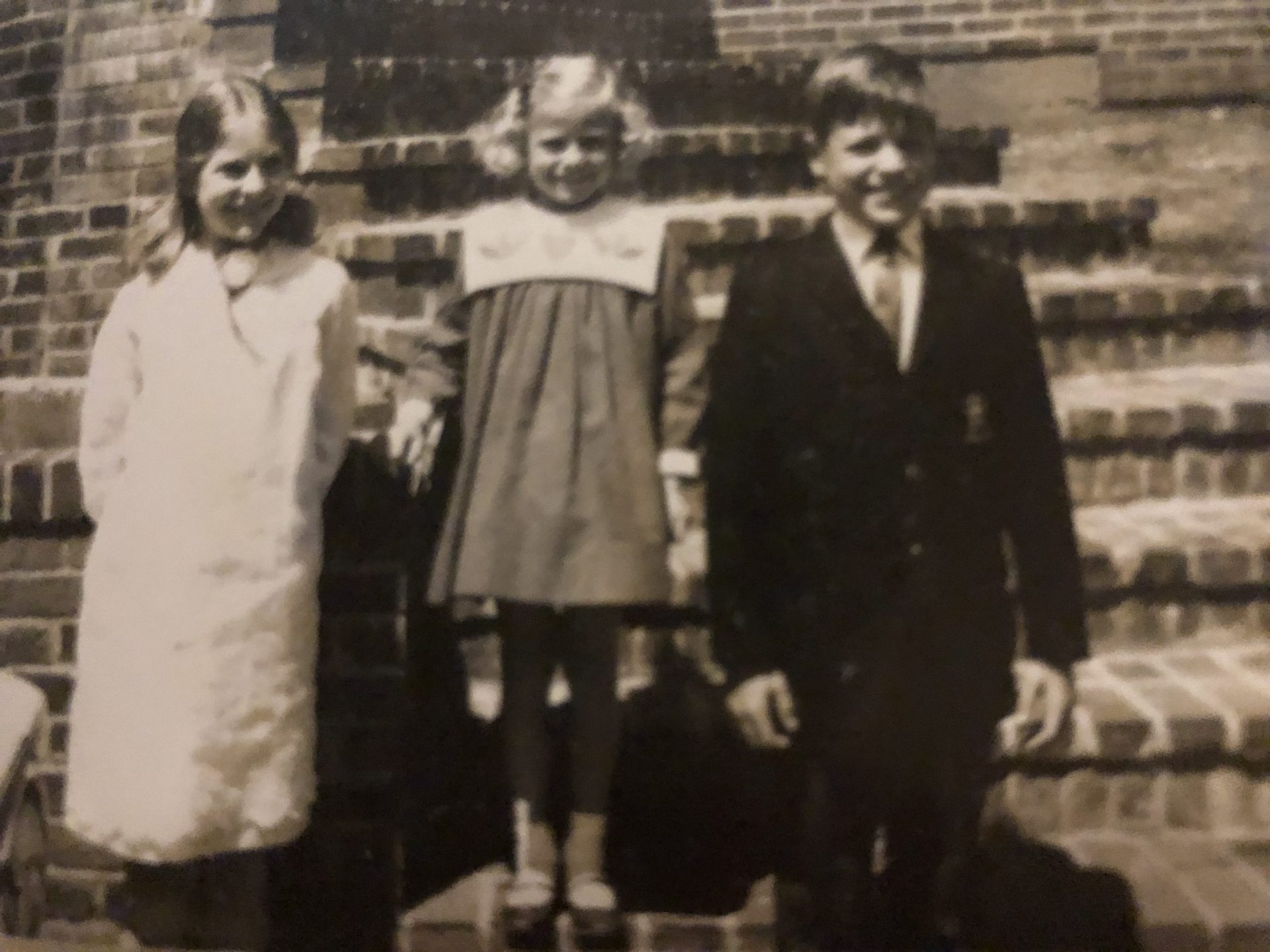


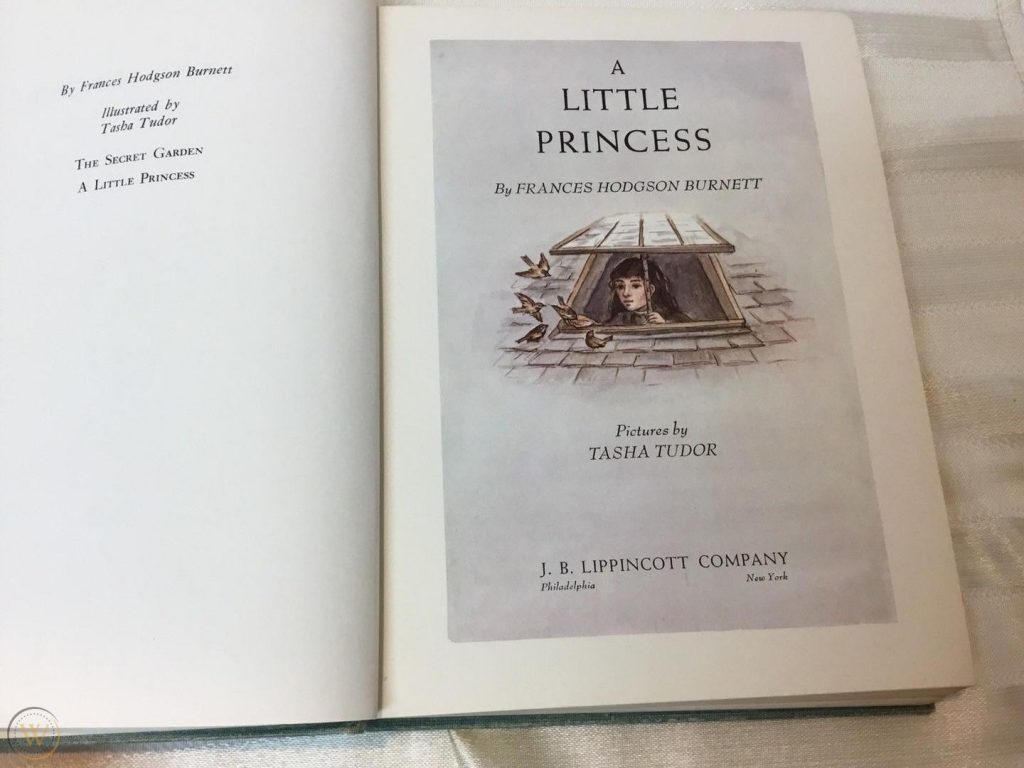
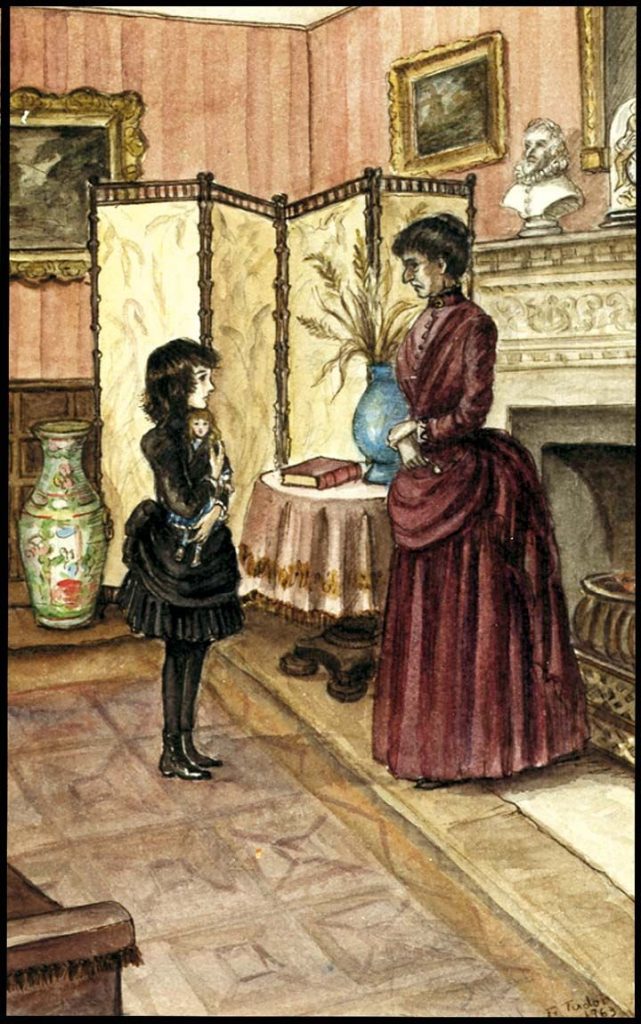

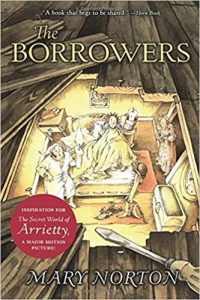

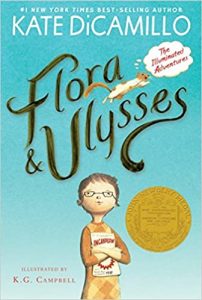
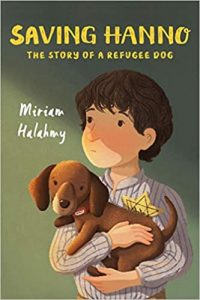
Fabulous post. Some of my all time favorites. I also loved 21 Balloons. Thanks Beth!
Thank you, Betsy! I forgot about 21 Balloons–a terrific addition! It was the first time I had ever heard of Krakatoa. Might be time to reread it.
Good reminder about the power of children’s fiction, Beth! A Little Princess was a favorite of mine, as well, and I also had – and still have – the beautiful Tasha Tudor edition.
I understand Frances Hodgson Burnett’s biography is fascinating too! And she includes bits of her story in her books. I may have to download it, if it’s available in that format. Or check it out of the Library. (I hope you have been excessively diverted this week, Anne!)
Love this post! A step back into childhood and the wonderful books you mentioned brought a smile to my face! I hadn’t thought of The Borrowers in a long time—I loved it as a child. I especially loved The Book Inn and hearing about your parents, Beth. Thank you Jennifer and Beth!
I think the Borrowers continue to live underneath my kitchen! I feel almost as protective of Parnassus as I did The Book Inn–such a wonderful period of childhood. Love hearing from you Tracy!
Thank you Beth. I loved waking up to your words this am. A Little Princess and The Secret Garden were both treasured members of my small book shelf. I read them over and over again.
So lovely to hear from you, Lucy! I am not sure what happened to my copy of The Secret Garden—I think i read it as a library book, but I remember bedridden Colin. Your post reminds me that my husband spent a year in a convalescent home at age 5. I must get him a copy!
Just finished An Episode of Sparrows, which I didn’t know was a children’s book until I googled it. It was so beautiful, it made me weep with joy (sappy, I know, but something this social distancing caused me to do more than once). Thanks, Beth, for opening up a whole new genre to take us away from what our world has become.
Oh Nancy, you make me want to read An Episode of Sparrows! I love the journey away from this world that good books have always provided.
What a radiant post! This felt like a reunion with beloved long-lost friends. My battered copy of A Little Princess still sits in a corner of a bookshelf.
Thank you, Christina! I gave a copy to my granddaughter who turned 8 May 30. I hope her daddy will read her the first couple of chapters to get her started. One day I hope her copy sits, battered, on a grown-up’s bookshelf.
Thanks for evoking smiles and memories of some favorite books. I might have to reread The Secret Garden or A Little Princess during the next rainy spell; they are both still on my bookshelves. Beth, your family home and the Book Inn sound magical and full of love.
Thank you, dear Anne! Reading while it rains outside is a sweet pleasure! It was certainly an idyllic period for my family. One of the last books mom gave me from the store is a now-banned novel!
I loved this Beth! Thank you for your delightful recommendations and for sharing your family and life with us. More stories about The Book Inn please!!!
Here’s a short story, Glo: Dad was the sweetest man, but very careful with money. One afternoon, I must have been about 12, we were both pining for some chocolate, and he gave me a twenty and said, “Run down the mall to the candy store and get us some. Bring me back the change.” I chose some kind of coconut chocolates, costing maybe $3.75 a pound. Doing some quick greedy math, I said, “I’ll take five pounds.”
“Wow,” she said, “you must be having a party!”
I thought, what a funny thing to say, until I picked up the heavy bag of chocolate and saw the couple of dollars in change I got back. It was a long walk back to the store.
Pocketing the remaining bills, Dad just said, We’ll enjoy that for a long time!
And he never asked me to shop for him again.
Children’s books do have great meaning put in the simplest of words. I’m reminded of the many books I read to my daughters when they were young. Thanks for the reminder Beth!
Yes, Rebecca, those days of trouble-free reading were so wonderful. And reading to children is an even greater pleasure!
Loved all these books – Stockard Channing’s reading of the Ramona books are incredible when traveling with young kids
What a terrific suggestion! One experience my husband and I share from somewhat different childhoods is that we both listened to Cyril Ritchard’s marvelous reading of Alice in Wonderland. It still resonates with each of us. A great way to learn new words and their pronunciation!
Thanks Beth! Was this book the basis for the Shirley Temple movie, The Little Princess? I think that was the story line for it. Miss seeing you!
It was! There were so many different editions of the book over 100+ years (I stopped counting at 25), and must have been more than a half a dozen movie versions. I’ve never seen the Shirley Temple version, but should probably look for it. Strangely, the book was so special, I’ve never felt film could do it justice. It was already perfect in my imagination!
I miss you so much, too, Betsy!
You always transport us with your writing, Beth. I was there with you in your room with the trees and the view of guests driving up the driveway! And Ramona Quimby was a childhood favorite. Thank you for this wonderful post!
Thank you, dear Mary! Do you know I never read Ramona Quimby until I got it for my boys when they were little. What a funny and delightful little character!
I understand Frances Hodgson Burnett’s biography is fascinating too! And she includes bits of her story in her books. I may have to download it, if it’s available in that format. Or check it out of the Library. (I hope, BTW, that you have been excessively diverted this week, Anne!)
What a beautiful, meaningful and heartfelt review, Beth, evoking beloved memories of our childhood and The Book Inn. Your magical bedroom across the hall from mine was your favorite refuge for reading. I could see your bedside lamp casting a glow until late into the night as you lost yourself in fictional fantasies of wonderland, a treasured habit you still maintain today. Thank you for sharing your gifts.
Love you, sweet Jane! I also remember taking a pair of scissors to your favorite little pair of red jeans–thinking I could fit my fat self into them if only they didn’t have those skinny pants–as you watched in horror!
Love you, sweet Jane!
A gentle way to start the day during uncertain times. Thank you for this lovely read. More chapters please.
Love this, love you!
Thank you, dear Nan! You are more prolific than I am these days, and I always devour your adventures and reminiscences too! xo
Thank you for your beautifully staged invitation to return to the magic of the literature of innocence. Thank you for including the autobiographical element, as this was new and endearing information about you, your siblings and your lovely parents. I can only vaguely recall the various favorites of my childhood, but their influence is embedded in my character and in the way I helped to introduce my son to the transformative power of the arts, which went on to be the basis for his most visible gift to the world.
You have such a great memory, Frank, and a kind way of looking at the world. Yes, art is a great window into other perspectives, other worlds and into oneself too sometimes!
Oh Beth, I needed this wonderful post today! The joy of books was only available to us if the Book Mobile came to the parking lot in the Green Hills mall. It would park in front of the current Restoration Hardware Store, a Walgreens in the early 1960’s, and the Bookmobile had Airconditioning!
Reading was so important to many of us as children and continues to cure what ails me during times of stress or distress.
Maggie’s children were here with me last week and I ordered 5 Kate DeCamillo books for 8 year old Claire. Parnassus had them ready in a few hours and I wish I had included your recommendation, Flora and Ulysses! I will send this to little Claire next!
Were your ears burning this morning? During Belmont UMC youth Zoom Sunday School I mentioned your name! The lesson was on money, what Jesus says about money, how do you spend your money, what causes to you contribute to. I told the kids how hard it was for me to ask people for money for good causes and how you told me, “Lestie you have to talk to them so they will want to give you money!”
I thought it was serendipitous that I was thinking of you and then read your article!
Much love to you dear Beth!
Lestie